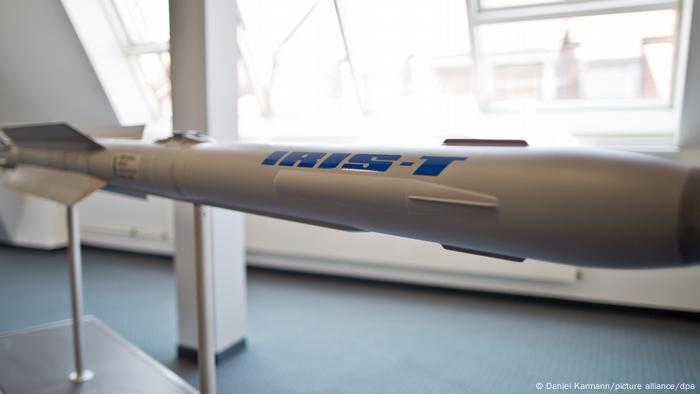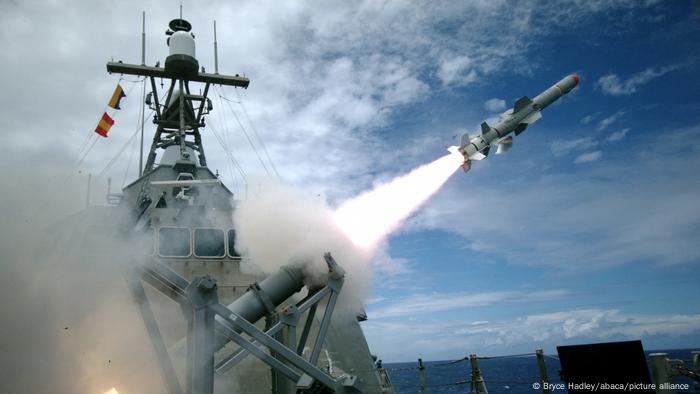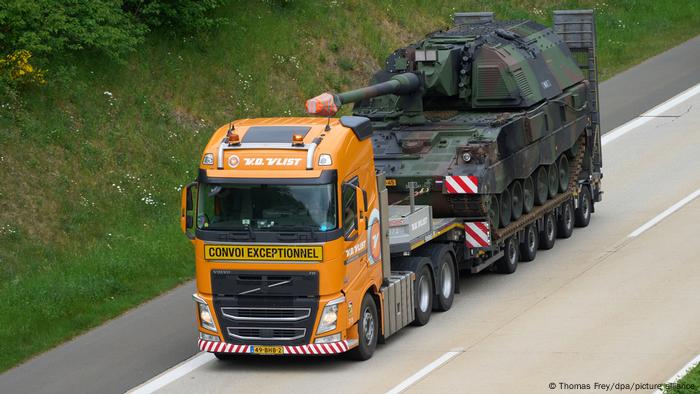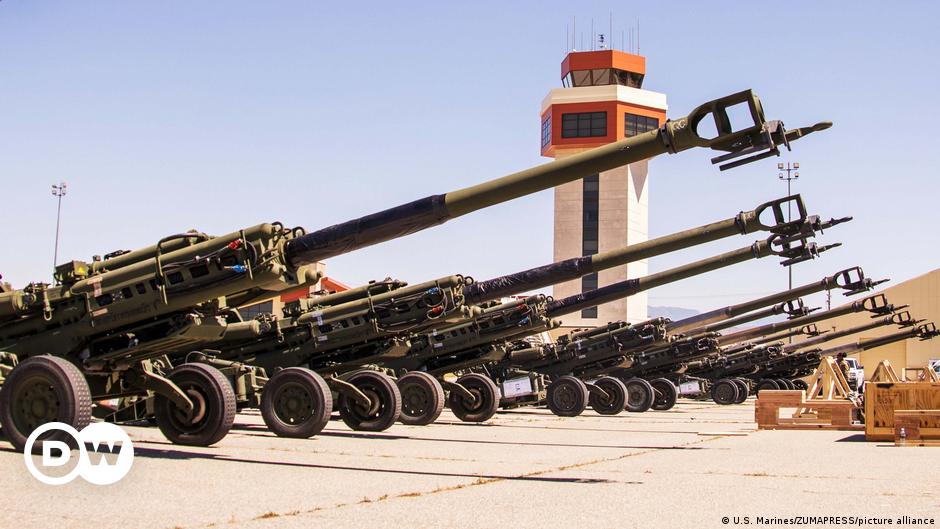The battle for Donbass can only be won with heavy weapons. This is the consensus among military experts. In order to reduce the numerical superiority of the Russian army in this regard, Ukraine’s western allies have already supplied thousands of weapons with ammunition. But one thing is clear: the country cannot be defended without further arms deliveries.
At the same time, NATO does not want to risk war with Russia. Moscow repeatedly emphasizes that arms deliveries can also be counted as an attack – especially if the arms are suitable for attacking Russian territory. That is why the supporting states weigh very carefully which weapons systems they supply to Ukraine.
USA
This became clear again at the end of May, when US President Joe Biden announced that he would comply with the government’s request to hand over mobile rocket launchers to the Ukrainian armed forces. Specifically, it should probably be multiple rocket launchers of the type MLRS (Multiple Launch Rocket System) or the lighter version HIMARS (High Mobility Artillery Rocket System).
The HIMARS multiple rocket launcher, shown here during an exercise in California, is very mobile
–
Both are wheeled platforms that can fire a variety of different missiles. The main difference is that the HIMARS has its rocket launcher mounted on an armored truck instead of a tracked vehicle. Although this limits off-road mobility, the tire vehicles consume significantly less fuel. Above all, it is a third lighter in weight, allowing it to be transported by plane.
Both systems are capable of firing medium-range missiles with a range of several hundred kilometers. However, the US government has rejected this armament. Instead, the Ukrainian armed forces are to receive missiles with a maximum range of 80 kilometers. The aim is to repel the Russian attack on Ukrainian territory. A radar system for anti-artillery defense from the USA should also help. The US government says Ukraine has pledged not to use the weapons to attack Russian territory.

The US and other NATO partners have already delivered dozens of M777 howitzers to Ukraine
–
Since the beginning of the Russian attack, the United States has been Ukraine’s largest arms supplier by far. In particular, the portable missile system Javelin (for anti-tank) and Stinger (against air targets) could have made a decisive contribution to blocking the Russian invasion in the early phase. For the pitched battle in the Donbass, the United States and other NATO countries also supplied 155-millimeter NATO caliber attack helicopters and field howitzers. Further units of these weapon systems are also to be delivered.
Deutschland
Ukraine and NATO partners accuse Germany of hesitating in arms deliveries. From Berlin it is said that the federal government adheres very closely to internal NATO agreements. The fact is that Germany has so far supplied Ukraine with thousands of smaller weapons such as rifles, mines and anti-tank, bunker and air-raid rocket launchers – including several million rounds of ammunition – but no heavy weapons.
A few weeks ago, the federal government promised the delivery of 50 once decommissioned Gepard anti-aircraft tanks and seven 2000 self-propelled howitzers. In contrast to field howitzers pulled by vehicles, these can change position independently after each shot.

Germany wants to supply Ukraine with IRIS-T missiles against air targets
–
Chancellor Olaf Scholz has now announced the delivery of the state-of-the-art IRIS-T air defense system and a tracking radar. In addition, Germany will also provide four multiple rocket launchers from Bundeswehr stocks.
One problem with supplying Western arms is that Ukrainian soldiers are mostly unaware of them. While a brief introduction is sufficient for simple devices, experts say that training for complex systems such as the Cheetah tank can take several weeks or even months. This is one of the reasons why Germany participates in so-called ring exchanges. For example, it replaces Soviet-style battle tanks and armored personnel carriers supplied by the Czech Republic, Slovenia and Greece to the Ukraine with “Marder” and “Leopard 2” from Bundeswehr stocks.
Denmark
Not only the Donbass is contested. The Russian Black Sea Fleet is also laying siege to the south-west coast of Ukraine. So far, Ukraine has been protecting Odessa and other coastal cities primarily with sea mines. Otherwise, however, the coast is largely unprotected against an invasion from the sea, since Ukraine itself does not have a significant navy.

The Harpoon anti-ship missile can be launched from ships, aircraft and land (stock image)
–
The Harpoon all-weather anti-ship missiles promised by Denmark would significantly improve the chances of defending Ukraine’s Black Sea coast. It might even break the naval blockade that is largely cutting off Ukraine from world markets.
United Kingdom
The British government says it has delivered a number of weapon systems to Ukraine. These include various man-portable guided missiles that, like the Javelin and Stinger, can be used by infantrymen against air and ground targets after a short briefing. But heavier missile systems that can be launched from vehicles or from the ground also went to the Ukrainian army.
According to Defense Secretary James Heappey, “hundreds” of Brimstone-1 missiles are also to be delivered to Ukraine, which can destroy tanks, artillery positions, but also lightly armored boats. In addition, there are 120 Mastiff-type armored troop carriers with strong anti-mine armor and small transport drones for supplying front-line positions with food and ammunition.
Czech Republic
The Czech Republic is said to have already delivered an unknown number of armored personnel carriers and main battle tanks, multiple rocket launchers and howitzers, and possibly combat helicopters of Soviet design to Ukraine. And apparently the country wants to deliver more heavy weapons. Continuity is important, said Defense Minister Jana Cernochova at the end of May.
More states
According to various sources, a number of other countries plan to supply Ukraine with artillery systems including tens of thousands of rounds of 155mm artillery caliber ammunition, including Canada, Italy, Greece, Norway and Poland. Like Germany, the Netherlands want to deliver several Panzerhaubitzen 2000.

The Netherlands also delivered several Panzerhaubitzen 2000 to the Ukraine
–
Both the M777 field howitzer, which is common in NATO, and the Panzerhaubitze 2000, use different ammunition to fire, for example, fragmentation, multispectral smoke, flare or “ordinary” high-explosive projectiles with the usual NATO caliber. However, the Panzerhaubitze 2000 can use larger propellant charges. Their projectiles can reach targets up to 40 kilometers away; the maximum range of the M777 is given as 25 kilometers.
–


